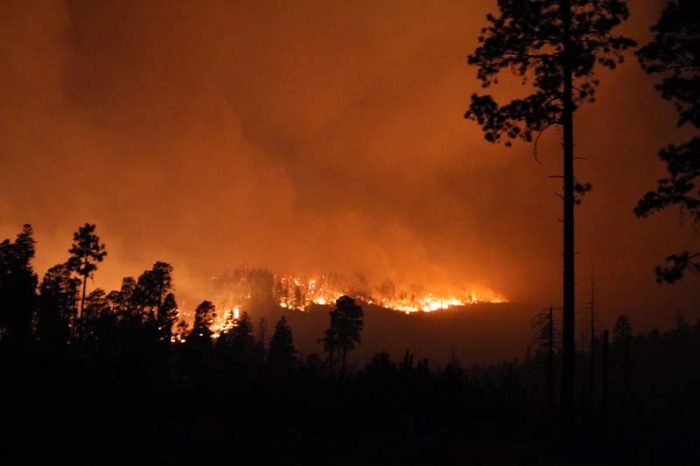A Historic Culture Threatened by Wildfires

Does it seem to you that we are hearing more about wildfires?
There’s a reason: they are increasing in frequency and intensity and occurring over a longer period of months. According to the National Interagency Fire Center, there have already been more than 31,000 wildfires so far this year, burning over 1.6 million acres. With the majority of the wildfire season still to come, it seems likely that the year 2014 will match or exceed the 10- year average of 45,000 fires and 3.9 million acres burned.
According to the Washington Post, a drought that has dragged on for several years and a warmer-than-average winter have Western states worried that they face extraordinary challenges in what by many estimates will be a record fire season.
Wildfires are more than a nuisance. Here’s how Matthew Desmond described a terrifying wildfire in his 2013 New York Times essay: “wildfires can burn so hot they create their own weather systems, melt trucks, and leave the landscape barren and ashen; firefighters call it moon-faced. They can barrel through the crowns of trees, launch embers that spark fires miles away, or burrow underground through root systems and spring up behind you. A fire in a forest is alive with terror and power.”
Wildfires frequently cause death, destroy homes, and disrupt the lives of thousands of people. When wildfires destroy acres of forests, they often cause imbalances in nature, resulting in more problems.

Sometimes wildfires can even threaten a centuries-old culture.
I recently received a letter from Alvin Warren, the Tribal Treasurer of the Santa Clara Pueblo about the effects of a series of wildfires in New Mexico.
“The people of Khap’o Owingeh have called the Jemez Mountains, Pajarito Plateau and Rio Grande Valley home for millennia. They are among only 6,000 people on Earth who sustain the Tewa language and culture. Their way of life is deeply interwoven with the Santa Clara Canyon: the small stream it feeds has quenched their thirst and irrigated their farmlands; the elk and deer it nurtures have provided them with food; the plants and trees that climb its steep slopes have provided them with healing medicines and the heat for their homes, and its sacred sites and ancient villages connect them with their ancestors. The Khap’o Owingeh cannot be who they are without their land.
Tragically, in 2011, the majority of the Santa Clara’s canyon was consumed by the Las Conchas Fire, which burned over 243 square miles in the Jemez Mountains. This fire was the culmination of four catastrophic fires over 13 years that altogether have charred 80 percent of their forest. These fires have transformed the canyon’s geomorphology and hydrology, vastly increasing the likelihood of catastrophic flooding. Such a flood would inundate the Pueblo’s homes, public buildings, and ancient village and irrigation systems. Already, flooding events have resulted in four Presidential Disaster Declarations in Santa Clara in just three years.
In response, Santa Clara has decided that – with every slope stabilized, every seedling planted, every habitat restored -? the regeneration of their beloved canyon will mark the revival and rebirth of their ancient culture. Toward this goal, Santa Clara has engaged a diverse and growing group of partners in an ambitious, multi-?generational initiative. The Pueblo is working with the U.S. Forest Service, the U.S. Department of Interior Bureau of Indian Affairs, FEMA, the USACE, the U.S. Natural Resources Conservation Service and the State of New Mexico. More than 200 individual donors have contributed to a fund the Pueblo developed in collaboration with NMCF. They have also received support from non-governmental organizations, [such as] the Christensen Fund, Chamiza Foundation, Nature Conservancy, and the National Wildlife Federation.
On Wednesday, August 13, 2014, an all-day meeting is being held on “Philanthropic, Federal and Tribal Partnerships for Disaster Recovery.” The meeting will focus on how to generate the funds necessary to restore the Santa Clara watershed and develop a long-term recovery structure.”
If you’d like to learn more about this event, you can contact J. Michael Chavarria of the Santa Clara Pueblo New Mexico Community Foundation at RSVP@nmcf.org. or Alvin Warren at treasurer@santaclarapueblo.org.
If you want to learn more about wildfires, please also take a look at the issue insight CDP has prepared on wildfires.
If you would like to discuss the Santa Clara Pueblo meeting or have some thoughts on wildfires, you can reach me at bob.ottenhoff@disasterphilanthropy.org.
